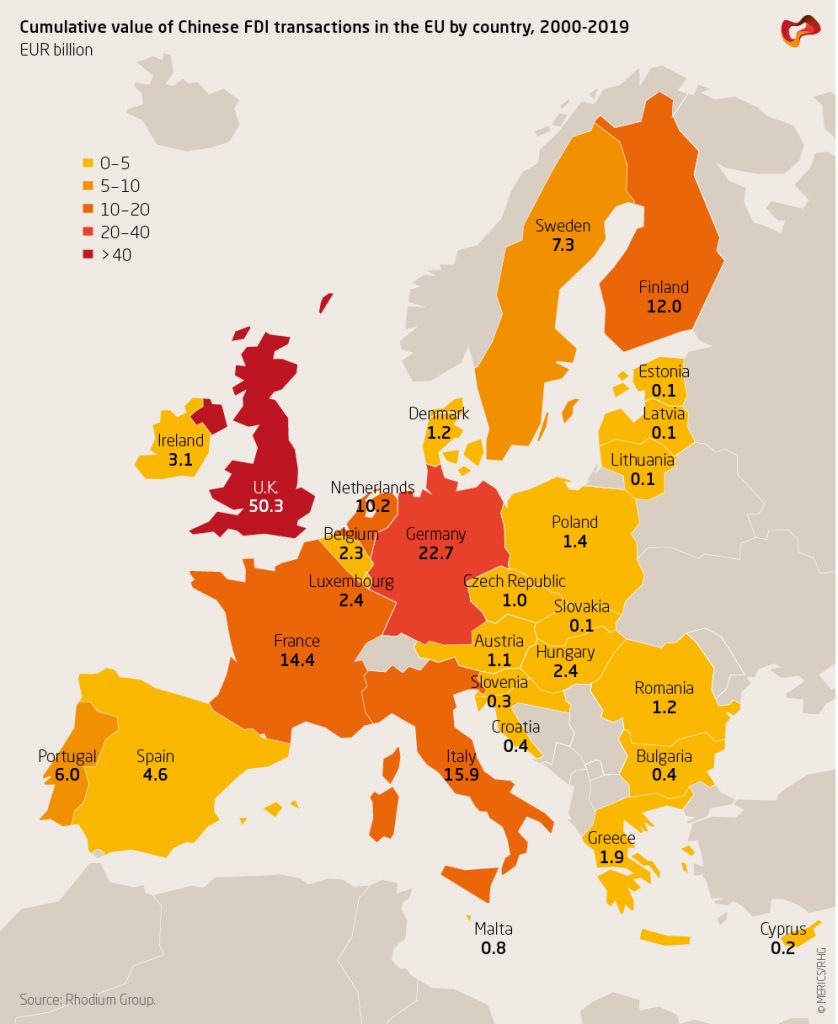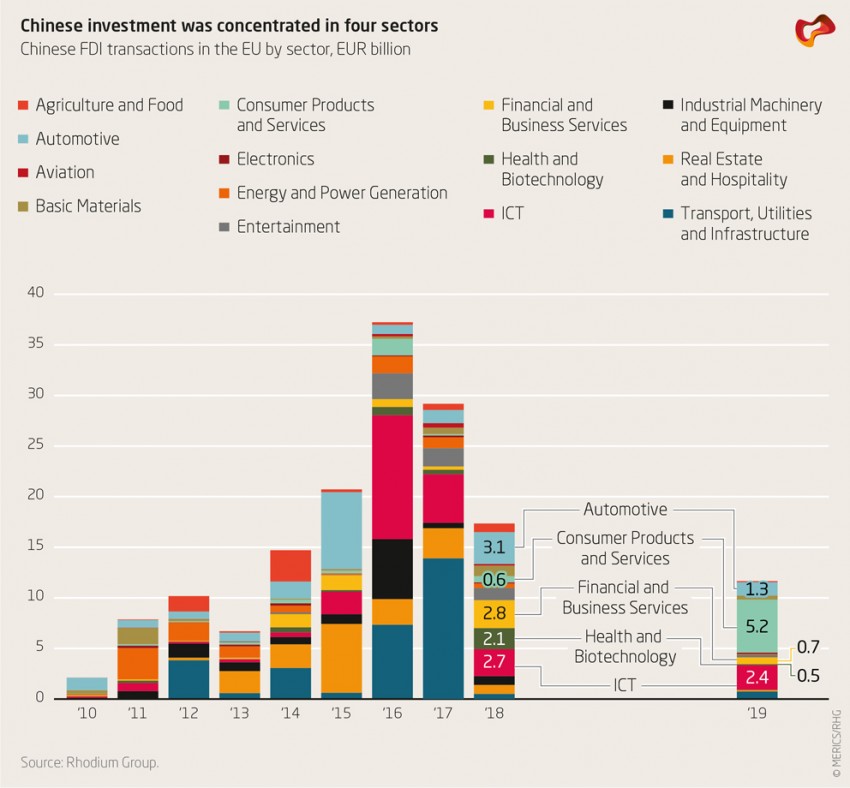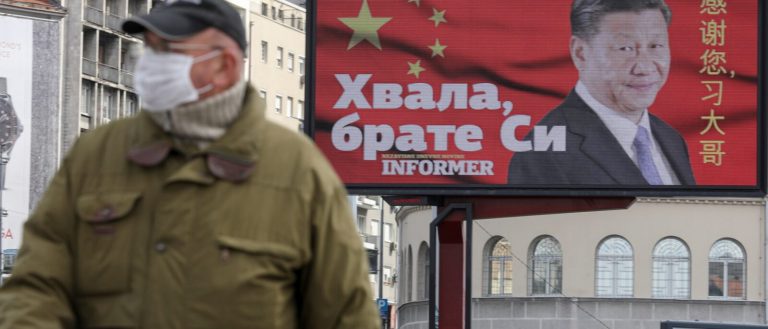In 2012 when China hosted the Central and Eastern Europe countries first summit in the ‘16+1’ format (China, Albania, Bosnia and Herzegovina, Bulgaria, Croatia, Czech Republic, Estonia, Hungary, Latvia, Lithuania, North Macedonia, Montenegro, Poland, Romania, Serbia, Slovakia and Slovenia) the meeting was expected to result in the Heavenly Empire’s active and effective expansion into the region. However, after eight years passed Beijing has not been able to strengthen its positions in the region globally. China has faced opposition from the EU and the United States, and yet its interaction with the states of Central and Eastern Europe comes down to building bilateral relations with the ones it can.
The region is extremely important for the PRC on several directions. Firstly, Beijing is interested in the transit potential of the states of the region. Central and Eastern Europe plays a key role in China’s strategy for One Belt One Road project implementation to flood Western European markets with its goods. The most important task here is creation of an efficient way of transport connection between Central Europe and Mediterranean ports, mainly, Piraeus (Greece).
Secondly, by expanding in the countries of the region Beijing is trying to strengthen its positions in the EU. Third, the political issue is crucial for the PRC. Trade and investment cooperation strengthening between Central and Eastern European countries and China provides additional opportunities to weaken the EU and get new diplomatic allies. Fourth, China is interested in the region in terms of Chinese goods consumption increase. Fifth, Beijing sees Central and Eastern European states in the context of creating a production facility for its companies and entering the EU market easier. However, China is unlikely to succeed in these plans implementation in the medium term.
Despite the trade and economic ties strengthening and Chinese investments flow, Beijing has not been able to take all advantage of the relations with the East European region. The investments were not as solid as expected, and the transport infrastructure did not develop at the planned rate because of Brussels’ position. Initially, there were some doubts about China’s capability to cooperate globally with EU member-states and non EU nationals. Brussels considered the Chinese ambitions as threat to the EU’s political and economic fragmentation and was wary of such intensive activity.
China’s infrastructure projects development tactics that Beijing follows worldwide has failed in the EU because of the open tenders system that neutralizes behind-the-scenes agreements. The process of tampering with the local elites in a democracy is a big challenge for Beijing. As a result, loud statements and ambitious projects were on the brink of failure. Beijing’s tactics that has proven itself as successful in African countries and some countries in Asia and Latin America turned into a nonworking model for Central and Eastern Europe.
China has managed to strengthen its positions in Central and Eastern Europe either in non EU nationals (for instance, Serbia), or the countries where political elites do not follow democratic standards so passionately and take EU-skeptical positions (like Hungary).
Nevertheless, trade between China and the countries of the region is increasing. Its lion’s share falls on the five EU member states – Poland, Czech Republic, Hungary, Slovakia and Romania. This top list can be explained by the market size and logistic characteristics. For example, as of now, Poland plays role as China’s ‘gateway’ to Western Europe. According to logistics expert Frank Pisch, about 80% of all freight trains running from China to the European Union passes through the border crossing between Poland and Belarus (Terespol-Brest), and then goes to one of the Polish cargo terminals in Malashevich (Małaszewicze).

In the Western Balkans, the lion’s share of trade falls on Serbia, China’s strategic partner in the region. The rest of the markets are just too small and underdeveloped.
China’s key exports to the region are engineering, chemical products, electronics, and textiles. As of the Central and Eastern European countries’ export to China, mechanical engineering and electronics products, including agricultural and mining industry goods, dominate.
As of investments in the region, China is mainly interested in industrial enterprises rather than raw materials. For example, Chinese companies control the automobile and chemical industries in Hungary; energy, automobile, heavy and food industries enterprises in the Czech Republic; building machinery production, waste processing, manufactures of electrolytes and LCD panels in Poland; household appliances manufactures in Slovenia; light industry sector in Slovakia; car tires production in Serbia, etc. Chinese companies are actively investing in construction, as well as in real estate and hotel business in the countries they are interested in, for instance, the Czech Republic, Poland and Croatia. Metallurgy and mining are also invested. In Serbia, Chinese companies control the Zelezara Smederevo steel mill and the RTB Bor copper ore mine.

Beijing has failed to achieve immediate results in the CEE energy sector investment. The Kostolac TPP expansion in Serbia can be considered as one of China’s successful projects in the region. The Tuzla TPP expansion in Bosnia and Herzegovina is among the Chinese large-scale projects as well. Despite the diplomatic activity, China has failed to implement the most important projects in Romania such as building of nuclear reactors for the nuclear power plant in Cernavoda and power stations in Rovinari and Tarnita – Lapustesti.
China cannot implement its plans in the region full-scale. The reason lays both in the EU’s position who is wary of the PRC’s strengthening in the zone of its interests, and the position of Washington as well.
Many Russian think tanks state that Russia sees no advantages from China’s expansion in the region, especially in the states supposedly loyal to the Kremlin, for example,Hungary and Serbia. Beijing-Belgrade cooperation strengthening makes Moscow feel alerted because the Kremlin takes China as the strongest competitor in this market. First of all, we mean projects in energy, transport and arms where Russian companies perform their activity.
Thus, China’s attempts to expand in the region turned out not as effective as Beijing expected. However, the PRC continues to demonstrate interest in the states of Central and Eastern Europe, strengthening its presence, primarily, in high-tech industries, and its influence in the countries where the local elites are more loyal to the Chinese and have maneuver freedom.




